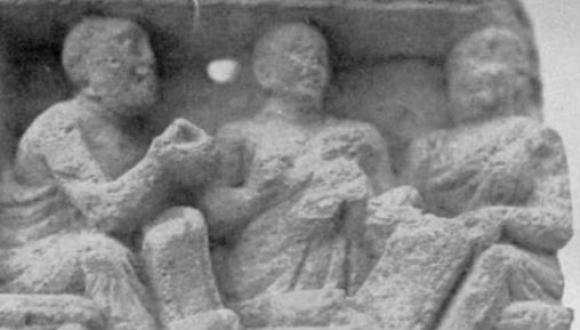הרצאה: "The Buddha and His Exegetes in Ancient Gandhāra: Deciphering the Earliest Buddhist Manuscripts"
החוג ללימודי מזרח אסיה
שמחים להזמינכם להרצאתו של:
פרופ' סטפן באומס, אוניברסיטת מינכן
"The Buddha and His Exegetes in Ancient Gandhāra: Deciphering the Earliest Buddhist Manuscripts"
יו"ר: ד"ר רועי צהר
פרופ' באומס הוא אחד מהחוקרים הבולטים העוסקים בהתפשטות הבודהיזם במרחב הפאן אסיאני, והחוקר המוביל של פרויקט הטקסטים הבודהיסטים מגנדהרה – המקורות הטקסטואליים העתיקים ביותר מדרום אסיה
הנמצאים בידנו כיום.
ABSTRACT:
The earliest known Buddhist manuscripts were produced in the monasteries of Gandhāra (modern Pakistan and Afghanistan) from at least the first century BCE onwards. They were written on scrolls of birch bark in the language Gāndhārī (a descendant of Sanskrit and sister of Pali) and the local script Kharoṣṭhī (an adaptation of the Aramaic script of Iran). Gāndhārī literature was thought to be lost (except for a single Dharmapada manuscript from Central Asia) until spectacular discoveries in the 1990s brought to light a treasure trove of about one hundred Gāndhārī scrolls that had survived the millenia buried in clay pots. They turned out to contain lost versions of texts from the early Buddhist canon as well as many previously unknown scholastic and devotional texts that shed light on the development of Buddhist thought, on the emergence of Mahāyāna Buddhism, and on the transmission of Buddhism from India to Central Asia and China and its transformation into a world religion. The Gāndhārī manuscripts also show how the technology of writing was first adopted in the Indian cultural sphere and improve our understanding of the transition from orality to literacy in other parts of Asia and the ancient world. This lecture will give an overview of the new discoveries and then tell the story of one particular Gāndhārī manuscript – a commentary on early Buddhist verses – from its discovery, unrolling and preservation through many years of study leading to a digital reconstruction, translation and understanding of the scroll and its text. This modern exegetical process uncovers an ancient process of Buddhist monks in a Gandhāran monastery trying to make sense of the words of the Buddha that had reached them, using tools that laid the foundation for Buddhist textual transmission and interpretation for centuries to come.
Stefan Baums teaches Sanskrit, Prakrit and Pali language and literature and South Asian Buddhism at the Institute for Indian and Tibetan Studies of the University of Munich and serves as lead researcher of the Buddhist Manuscripts from Gandhāra project at the Bavarian Academy of Sciences and Humanities. Before joining the University of Munich, he held research and teaching posts at the University of Copenhagen, the University of Washington, the University of California, Berkeley, and Leiden University. His interests include Buddhist philology and epigraphy, the beginnings of written literature in India, the development of Buddhist hermeneutics, and the description of Gāndhārī language and literature. His current work focuses on the decipherment and edition of Gāndhārī birch-bark manuscripts containing early Buddhist commentaries and on a study of the historical connections and exegetical principles of these texts. He is editor of the Dictionary of Gāndhārī and co-editor of the Gandhāran Buddhist Texts series.


